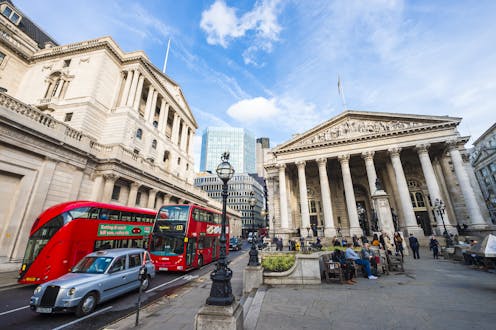UK bonds have hit a 25-year high – here's what that means for the economy
- Written by David McMillan, Professor in Finance, University of Stirling

It’s been more than a year since the UK economy was thrown into crisis after then-prime minister Liz Truss suggested making a wealth of unfunded tax cuts[1] in her September 2022 mini-budget. But a recent bond market sell-off has now sent borrowing costs rocketing again, pushing the bond market even higher than after Truss’s announcement.
Yields on UK treasury bonds – the rate the UK government must pay to borrow money – have risen to approximately 4.6% for ten-year bonds. Yields on 30-year bonds hit 5.1%, the highest since 1998.
Banks also use this rate as a key benchmark to set commercial loan rates, so this means borrowing costs are rising for businesses, as well as for the government. Two-year and five-year treasury yields (which are used to set mortgage rates) are also above the budget-fuelled high of last year, and at levels not seen in over ten years.
UK bond yields (30 year), 1998-2023:







